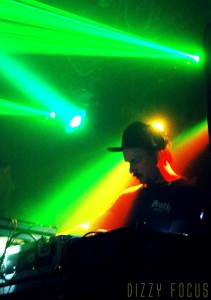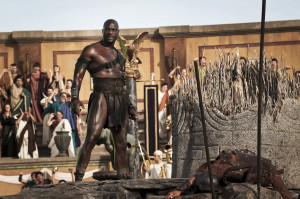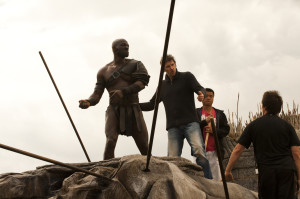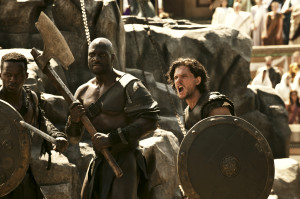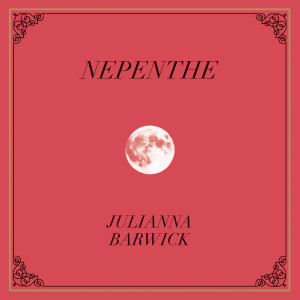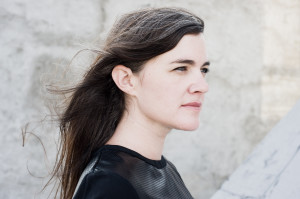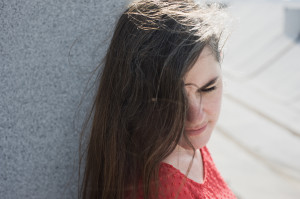Having helped fuel the drum and bass movement of electronic music in the ’90s and 2000s, Dieselboy is one of the few DJs of his era that has been able to thrive amidst the dubstep craze. While others have been stepped over (pun intended) by this equally aggressive EDM offshoot, Dieselboy has embraced these stylistic changes and, as a result, been embraced by dubstep fans. So much so, in fact, that he now finds himself co-headlining the Blood, Sweat and Bass tour with Downlink. With several new tracks being released by his Human Imprint and SubHuman record label this year, a secretive new musical project and the Blood, Sweat and Bass tour underway, Dieselboy takes a moment to put it neutral and talk to Wrestling with Pop Culture.
You were working on some new music just before this call. What can you tell me about that music?
I have a new project I’m working on. I can’t really say what the name of it is because I haven’t decided yet if I’m really going to put my name on it. It’s not exactly what I normally do and I feel like my name carries such a stigma that if it’s not straight drum and bass I’m going to get hated on for it. So I’d rather do something under a different name just so I can put it out there and see how it gets appreciated without my name attached to it. So that’s what I’m working on right now is this new project with a friend of mine.
Care to reveal who the other person is?
He’s an unknown artist, but he’s going to make some waves this year. We’re building him up right now.
You, of course, are known for drum and bass, which in many ways helped pave the way for dubstep. Dubstep is now the popular thing in the electronic music genre and you’re one of the few people who transitioned pretty well into that scene without really changing your style all that much. How were you able to do that?
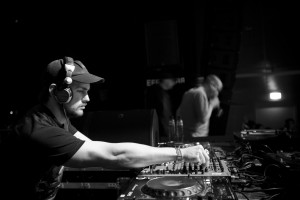 I kind of saw the writing on the wall. When dubstep became so popular there was an overload of it. I like all kinds of music and there was dubstep that I liked. I realized one of the ways that I could help keep drum and bass alive was to incorporate ten or 15 percent of my set into dubstep. I was able to then go into these dubstep events and play mostly drum and bass and expose those kids to drum and bass. Part of the reason I did that was to help expose these kids to drum and bass who may not even know what drum and bass is. So I’d kind of Trojan Horse myself into some of these events. There weren’t a lot of shows that were just straight drum and bass anymore. Everyone was incorporating different elements of bass music into their sets. So I kind of experimented doing the same thing because I’m a drum and bass DJ, but I’m also a DJ and I like all kinds of music. It was an opportunity for me to experiment a little bit and try out some different stuff. I had been playing drum and bass my entire career and wanted to fuck around with some new stuff.
I kind of saw the writing on the wall. When dubstep became so popular there was an overload of it. I like all kinds of music and there was dubstep that I liked. I realized one of the ways that I could help keep drum and bass alive was to incorporate ten or 15 percent of my set into dubstep. I was able to then go into these dubstep events and play mostly drum and bass and expose those kids to drum and bass. Part of the reason I did that was to help expose these kids to drum and bass who may not even know what drum and bass is. So I’d kind of Trojan Horse myself into some of these events. There weren’t a lot of shows that were just straight drum and bass anymore. Everyone was incorporating different elements of bass music into their sets. So I kind of experimented doing the same thing because I’m a drum and bass DJ, but I’m also a DJ and I like all kinds of music. It was an opportunity for me to experiment a little bit and try out some different stuff. I had been playing drum and bass my entire career and wanted to fuck around with some new stuff.
You recently emailed me a link Beyond the Back Bassline, which you described as your best mix ever. What sets this mix apart from previous mixes?
Back in the day before I was doing mix CDs, I was just doing mixtapes. When you do a mixtape, you don’t have to license tunes because you’re not making a profit on it. There’s a gray area there. Then when I started doing mix CDs all of a sudden however many tracks were in the budget to license, that was what my mix was. I was constrained by that completely and I did as much as I could within those constraints to put out the best mixes I could. So if we had enough money to license 17 tracks, that’s all I could use. Now, when I’m going back to doing old school mixes, I’m able to play 30 seconds of a song and that’s it. Being able to use whatever track I want and however much of each track I want to use, I’m able to really explore what I can do with the mix. The last four mixes I’ve done have been me going back and exploring those options again and just being able to do whatever the fuck I wanted to do with the mix. That last one really set the bar for me, but I feel like it kind of set the bar for other DJs, and not only drum and bass DJs. I feel like it’s an extremely super textured kind of mix. It’s something that if you listen to it ten, 15 times you might still pull out elements and little things in there that you might not have noticed before. It’s a super deep mix, super technical and I’m pretty proud of it.
Your Blood, Sweat and Bass tour is officially underway with Downlink, Mantis and others. How did this lineup come about?
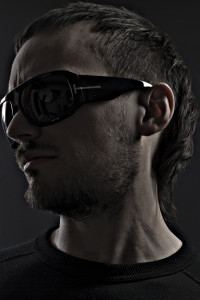 About two years ago I was in Tokyo and I played a show with Downlink. Sean [Casavant] and I have been friends for a while now and I think he’s an awesome producer, but I really respect his perspective on DJing. He kind of has the same take that I do, which is that he tries to be a great DJ. He’s just one of these guys that really embraces the old school ethos of being a proper DJ and doing shit live. I like the music that he plays, he likes heavy music like I do. We had this show together randomly and I was really impressed with his performance. Then we ran into each other a few times after that and I was just like, “Hey, man. Would you like to do a tour together?” He was down, so we decided to put this tour together. I came up with the name because it was a cool-sounding name.
About two years ago I was in Tokyo and I played a show with Downlink. Sean [Casavant] and I have been friends for a while now and I think he’s an awesome producer, but I really respect his perspective on DJing. He kind of has the same take that I do, which is that he tries to be a great DJ. He’s just one of these guys that really embraces the old school ethos of being a proper DJ and doing shit live. I like the music that he plays, he likes heavy music like I do. We had this show together randomly and I was really impressed with his performance. Then we ran into each other a few times after that and I was just like, “Hey, man. Would you like to do a tour together?” He was down, so we decided to put this tour together. I came up with the name because it was a cool-sounding name.
I put out a release of Mantis’ on SubHuman recently. I really like their music, they’re super nice guys and they’re also guys that are trying to be proper DJs. We also have Ajapai, who is an artist from Japan who makes heavy music and also is a good DJ. I just feel like it’s a good fit. We’re trying to do a tour with heavy bass music and real DJs, which is kind of becoming a lost thing these days.
Between this new project you’re working on, the tour and your upcoming SubHuman releases, when do you have time for new Dieselboy material?
This project I’m working on now is my focus. But I’m going to be doing a new mix in April. Downlink and I are going to do a mix that’s going to come out simultaneously under the banner of Blood, Sweat and Bass. That’s not going to be the name of the actual CDs, but it’s going to be under that banner to help promote our project and our tour. Hopefully it will be better than Beyond the Black Bassline.

